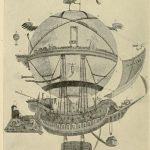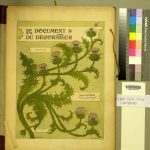This post was written by Julia Blakely, Special Collections cataloger. It first appeared on the Smithsonian Collections blog here.
Discovering an interesting mark of a former owner in a volume is one of the many great things about working with rare books. A signature of a famous person, a fun drawing, a gift presentation, marginal annotations revealing a reader’s thoughts, a memento laid-in, are not uncommon to come upon. Such additions after a work has been printed can provide the researcher with a connection to the past that provides important information. Or, can give a specific warning, if not a curse:



